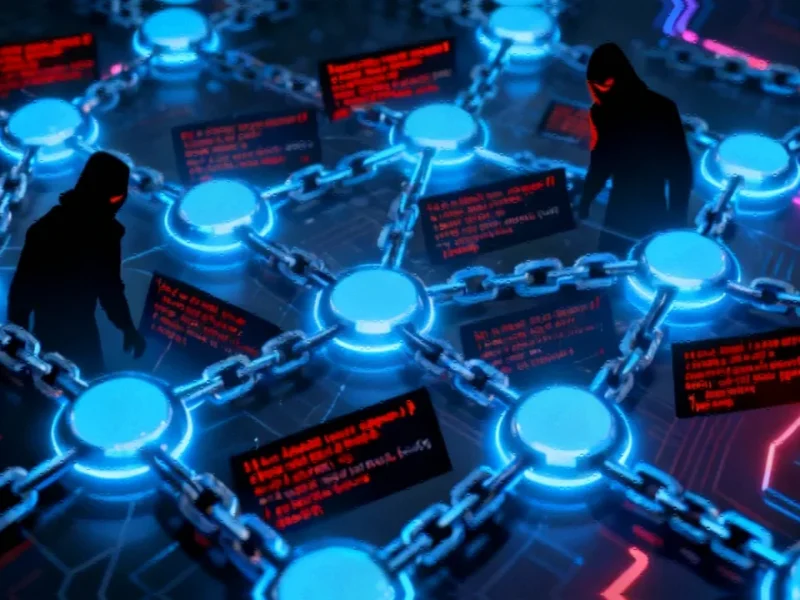Uncovering Salt Typhoon’s Latest Global Cyber Operations
Security researchers have uncovered a sophisticated cyber-espionage campaign exploiting a critical Citrix NetScaler Gateway vulnerability, attributed to the China-based threat actor known as Salt Typhoon. This global intrusion campaign demonstrates the evolving tactics of state-aligned cyber groups targeting critical infrastructure across multiple continents.
The operation, meticulously documented by Darktrace security analysts, reveals advanced tradecraft including DLL sideloading techniques and potential zero-day exploitation. These methods enable the threat actors to maintain persistent access while evading conventional security measures, highlighting the growing sophistication of advanced persistent threats in today’s cybersecurity landscape.
Salt Typhoon’s Expanding Global Footprint
Operating under various aliases including Earth Estries, GhostEmperor, and UNC2286, Salt Typhoon has maintained consistent activity since at least 2019. The group’s targeting patterns show a concerning expansion beyond their traditional focus on United States infrastructure to include organizations across Europe, the Middle East, and Africa. Their sustained operations against telecommunications, energy, and government sectors demonstrate strategic intent to compromise critical national infrastructure.
Recent industry developments in cybersecurity have highlighted how threat actors increasingly exploit vulnerabilities in widely-used enterprise technologies. Salt Typhoon has consistently demonstrated expertise in targeting solutions from major vendors including Citrix, Fortinet, and Cisco – foundational components of enterprise networks worldwide.
Technical Analysis of the Intrusion Methodology
The specific incident detailed in Darktrace’s advisory began in July 2025 when attackers successfully compromised a European telecommunications organization through a Citrix NetScaler Gateway appliance. The intrusion methodology involved several sophisticated stages:
- Initial Compromise: Exploitation of Citrix NetScaler Gateway vulnerability for initial access
- Lateral Movement: Expansion to Citrix Virtual Delivery Agent hosts within the internal network
- Infrastructure Obfuscation: Use of SoftEther VPN service infrastructure to conceal attack origins
- Malware Deployment: Implementation of SNAPPYBEE backdoor (also known as Deed RAT) via DLL sideloading
The threat actors demonstrated particular ingenuity in their malware deployment strategy, embedding malicious files alongside legitimate executables from established antivirus products including Norton, Bkav, and IObit. This approach allowed execution of malicious code under the guise of trusted security software, significantly reducing detection probability.
Command and Control Infrastructure Analysis
The deployed backdoor established persistent communication channels using both HTTP and custom TCP-based protocols. Security analysts observed distinctive HTTP traffic patterns containing Internet Explorer User-Agent headers and specific URI patterns such as “/17ABE7F017ABE7F0.” The command-and-control infrastructure included domains previously associated with Salt Typhoon operations, including aar.gandhibludtric[.]com.
This sophisticated communication methodology reflects the group’s continued emphasis on operational security and persistence. As organizations navigate complex market trends in cybersecurity, understanding these advanced C2 techniques becomes increasingly critical for effective defense.
Broader Implications for Enterprise Security
Darktrace’s advisory emphasizes the critical importance of behavioral anomaly detection in identifying sophisticated threats that bypass traditional signature-based security measures. “As attackers increasingly blend into normal operations, detecting behavioral anomalies becomes essential for identifying subtle deviations and correlating disparate signals,” the security firm warned.
This intrusion underscores the necessity for proactive defense strategies that prioritize anomaly detection alongside conventional security measures. The cybersecurity community continues to monitor how Chinese-linked cyber groups exploit Citrix vulnerabilities and other enterprise technology weaknesses.
Connections to Wider Cybersecurity Trends
This campaign occurs within a broader context of increasing state-aligned cyber operations targeting critical infrastructure. Similar to how Microsoft’s strategic vision influences technology ecosystems, nation-state threat actors pursue long-term strategic objectives through persistent cyber operations.
The financial sector also faces evolving threats, as evidenced by strategic pivots in digital currency and blockchain security. Meanwhile, related innovations in artificial intelligence are transforming multiple sectors, including how AI integration revolutionizes family offices and their security postures.
As organizations worldwide confront these challenges, understanding the regulatory landscape becomes increasingly important. The financial sector specifically must consider how UK retail investor access changes might impact security requirements and compliance obligations.
Strategic Defense Recommendations
Security professionals should prioritize several key defensive measures in light of these developments:
- Implement behavioral analytics capable of detecting subtle anomalies in network traffic
- Maintain rigorous patch management processes for internet-facing systems
- Deploy application whitelisting and execution control mechanisms
- Conduct regular threat hunting exercises focused on identifying living-off-the-land techniques
- Develop comprehensive incident response plans for advanced persistent threats
These defensive measures become particularly crucial as organizations manage transitions in technology infrastructure, including the security implications of Windows 10 support sunset and other platform lifecycle events.
The Salt Typhoon campaign serves as a stark reminder that sophisticated threat actors continue to evolve their tradecraft, demanding equally sophisticated defensive approaches from security teams worldwide.
This article aggregates information from publicly available sources. All trademarks and copyrights belong to their respective owners.
Note: Featured image is for illustrative purposes only and does not represent any specific product, service, or entity mentioned in this article.



